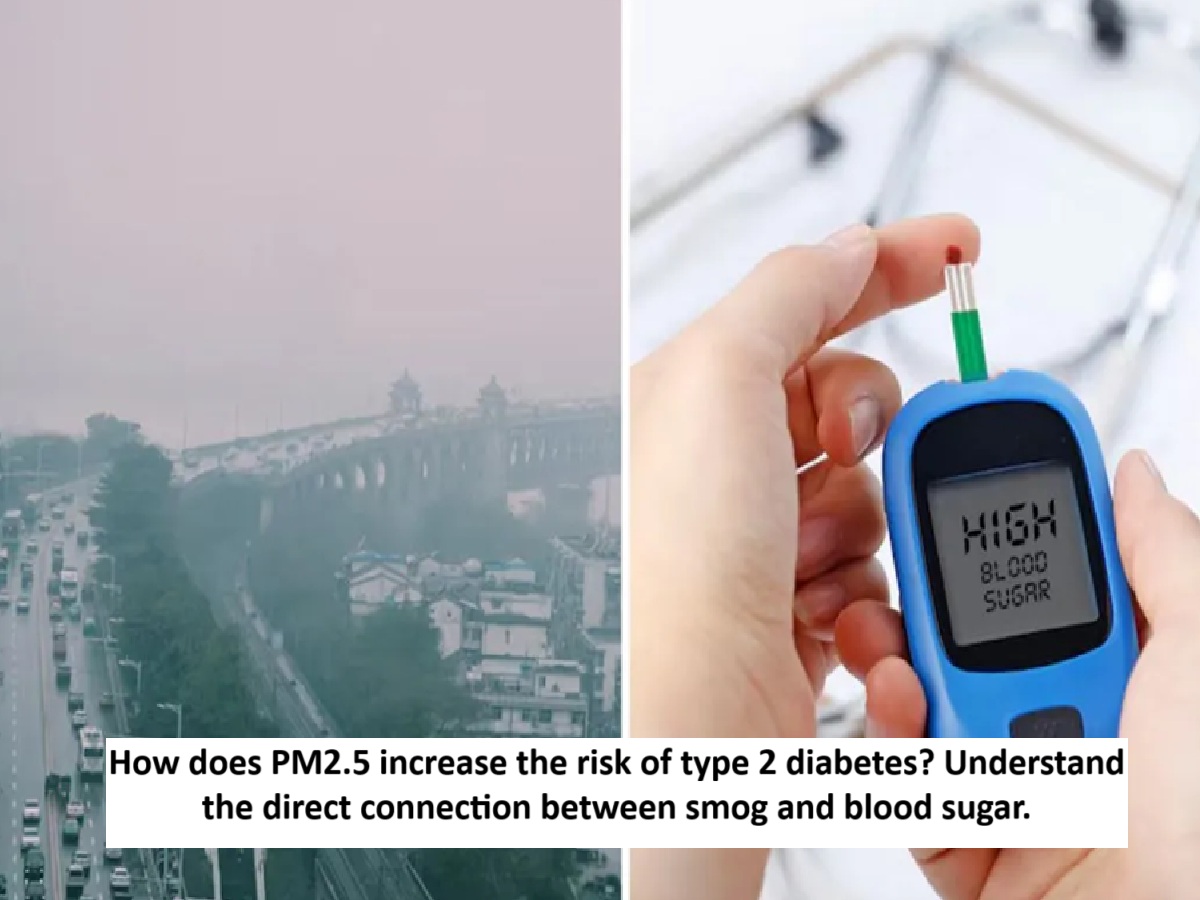
News Topical, Digital Desk : Whenever Delhi's winter arrives, a thick layer of smog engulfs the air. People complain of coughs, sore throats, and shortness of breath, but there's a danger invisible to our eyes. Yes, this air can also silently raise our blood sugar (Smog And Blood Sugar Connection). Research shows that Delhi's smog has become dangerous not only for the lungs, but for our overall metabolic health.
What harm does PM2.5 cause after entering the body?
The PM2.5 particles in Delhi's air are extremely small. You can't see them, but they reach your body and show their effects immediately. When inhaled, these particles first increase inflammation and oxidative stress. This affects insulin function, and the body's ability to handle glucose properly. Continued exposure also increases the risk of type 2 diabetes.
Additionally, air pollutants increase free radicals, which can lead to inflammation and insulin resistance (Air Pollution Effects On Insulin Resistance). Long-term, this can also weaken pancreatic cells.
Several international studies have also shown that increased PM2.5 levels increase the risk of type 2 diabetes. Studies show that people living in polluted areas were more likely to develop diabetes, regardless of their BMI, activity level, or financial situation.
Which people are more at risk?
If you're older, have a family history of diabetes, are prediabetic, or live in a high-traffic area, you need to be more vigilant about pollution. During winter, when smog peaks, blood sugar control can also be weaker than normal.
Diabetics already have low immunity, and pollution exacerbates their respiratory problems. This means the effects can be more severe and last longer.
How does smog increase blood sugar?
Pollution not only pollutes the air, it also disrupts the body. Smog-induced inflammation and insulin resistance disrupt glucose control. So, even if you're eating healthy, exercising, and taking medications, your blood sugar may suddenly spike for a few days. Many people struggle to explain these seemingly unexplained fluctuations in winter, but air pollution could be the culprit.
What to do on smog days?
If you live in Delhi and are diabetic, you must make a 'smog plan'.
- Monitor blood sugar a little more.
- Do not make any changes in medicines on your own – consult a doctor only.
- Add antioxidant-rich foods to your diet.
- Keep the windows closed at home and use an air purifier with a HEPA filter.
- If you have to go out, wear a good quality mask .
- If possible, workout indoors instead of outside.
- Drink plenty of water, so that the effect of toxins in the body is reduced.
When should one go to the doctor?
If you notice any of these symptoms on a smog day, don't delay:
- Difficulty breathing, whistling sound
- Chest pain
- Swelling in the legs
- blurred vision
- Fatigue quickly even after mild exposure
- Cough that lasts more than five days
- Sudden increase in blood sugar despite medication and a healthy diet
These may be signs that the impact of pollution on the body is becoming more severe.
Take some small precautions every day
Delhi's air pollution may not be an immediate relief, but its impact can certainly be mitigated. Monitor the AQI, maintain clean indoor air, and include fruits and vegetables in your diet that help reduce inflammation. If pollution increases, change your workout location and monitor your blood sugar.
Smog isn't just about eye irritation and coughing. It's slowly altering our body's systems—especially our blood sugar. If you're diabetic or at risk, it's crucial to be vigilant. Only timely action can keep you safe. Clearly, changing Delhi's air will take time, but you can start protecting yourself today.
Read More: Want to get rid of a sagging belly? Pyramid walking is the easiest way, read its benefits.
--Advertisement--

 Share
Share



